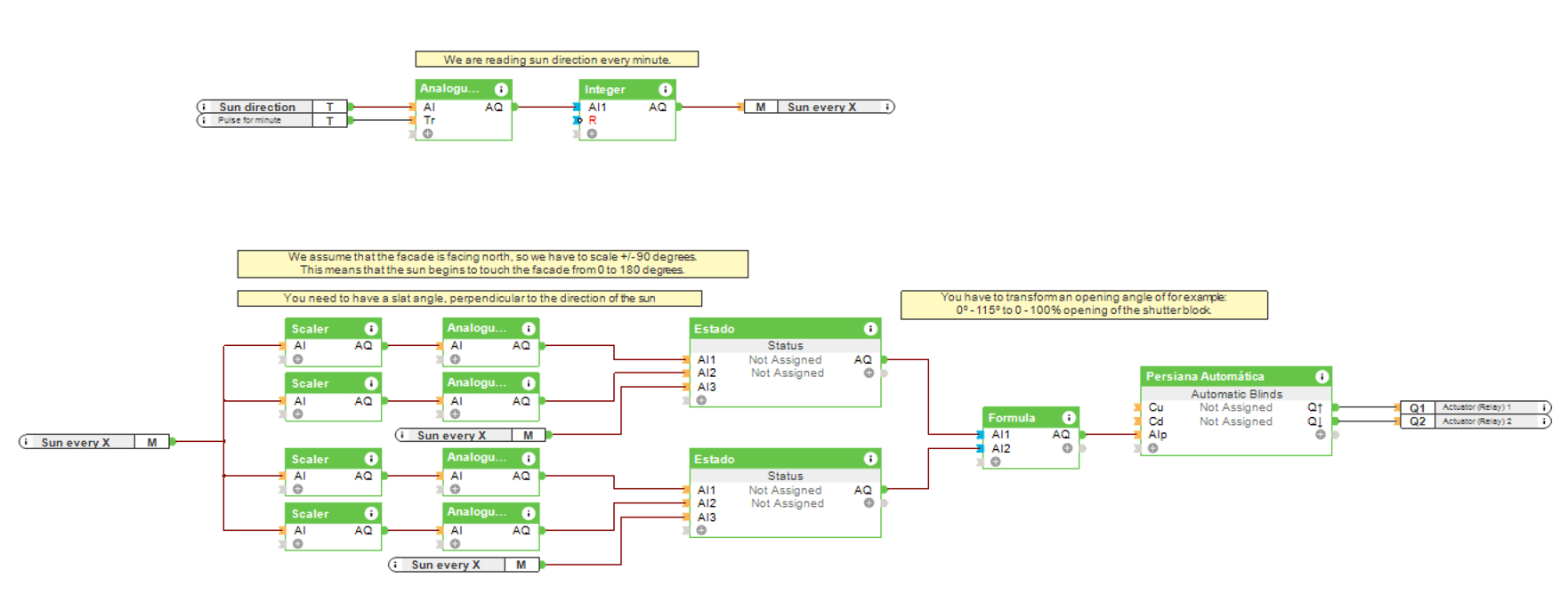Brief: I want to implement vertical blind automation.
Vertical and horizontal shading systems have a lot in common. Both come in a variety of shapes and sizes. And, thanks to Loxone, both can be intelligently controlled to give you horizontal or vertical blind automation.
When used intelligently, blinds can help keep rooms pleasantly cool in summer by reducing solar gains. On the flip side, in the winter, they can help to heat rooms by letting in as much sunlight as possible.
While automation of horizontal blinds is now fairly common, their vertical counterparts have been left behind in this regard. However, as far as we can see, there isn’t a reason for this. Automation of vertical blinds could be just as effective as automating horizontal blinds.
As horizontal blinds are far more common, vertical blinds tend to only be used in custom applications – this usually results in them being installed in larger buildings with bigger windows such as schools and offices. In this Use Case, we’ll show you how to use Loxone to set up vertical blind automation.
Solution: Using Loxone for vertical blind automation.
By setting up vertical blind automation with Loxone, you increase energy-efficiency and maximise privacy levels – regardless of where the system is installed.
Correctly setting the geo-coordinates and window positions will allow the Miniserver to always know which windows are currently in direct sunlight – as it knows when sunrise and sunset are.
With this information in mind, the system can react according to the desired outcome – i.e is the room in question currently too cold or too hot. If a room is too cold, for example, the vertical blinds can be opened to let in sunlight in an attempt to passively heat the room.
If the system is in Automatic Shading Mode, then a compromise between sun protection and the best possible view of outside will be sought.
When using horizontal blinds, the height of the sun is a very important factor. However, when it comes to vertical blinds, the direction of the sun (measured in degrees) is far more important.
To get the most out of a vertical shading system, the vertical slates must be able to adapt depending on the direction of the sun’s rays.
By using a Nano 2 Relay we can achieve exactly that.
Hardware:
Tip: Thanks to Loxone Air technology, even an existing system can be easily automated without much of a cabling effort.
Configuration:
Download the sample file:
Vertical Shades Control
Why you and your customer should consider vertical blind automation?
An intelligent shading system can provide great levels of comfort and high-level energy efficiency – whether that’s in a traditional family home, a school, an office, or anywhere else.
Automation of horizontal blinds is becoming ever more common – so why wouldn’t you set up vertical blind automation? There really isn’t much difference. In fact, with vertical blinds (normally) being used for larger windows the benefits of having an intelligent system could actually be even greater.
An automated vertical blind system offers a wide variety of functionality – including sun protection, passive heating, protection of privacy, heat protection, reduced glare and much more.
With Loxone you can implement vertical blind automation that takes care of all of these requirements.
